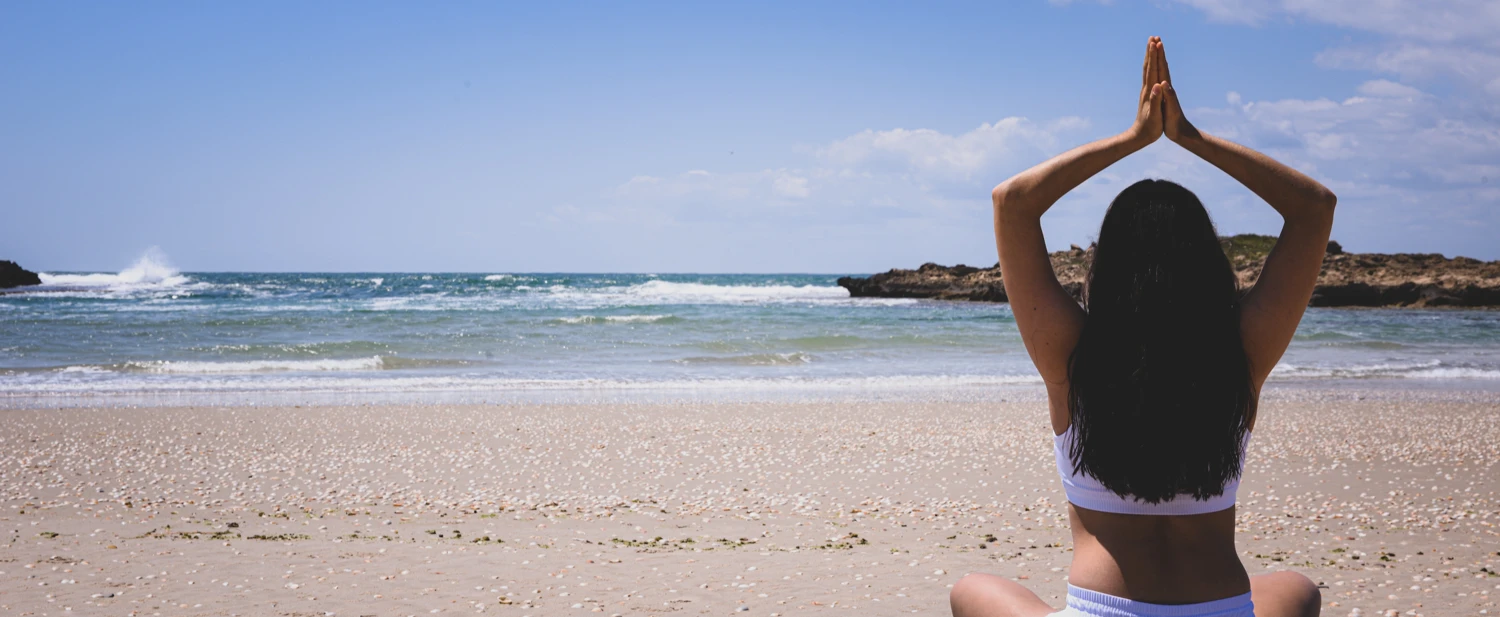6 Tips for Beginners

1. Every flow is different – Trust the process
Every time you get on your mat, you arrive with a different body and a different experience - and your practice should mirror that. It should be dynamic and constantly evolving, an expression of your mood as it is TODAY.
Each time you flow will be a different experience – your practice will feel different based on your current mood, what you ate that day, the previous night’s sleep, etc. You might feel that you made major steps forward with your flexibility one day and extremely tight the next, and that’s not a regression – it’s an indication of your body asking you to take it easy and slow things down. Over time, you will learn to intuitively sense where you’re holding tension – as well as how to release it through different poses.
2. Mind over matter – Stay chill
At its core, yoga is really about strengthening the mind-body connection and living in the present moment. Before entering a posture, I always find it helps to mentally visualize myself performing it. Often, our resistance to a posture is just an automatic mental notion we have that we cannot do it. Remember that progress isn’t linear, and focus on how good the journey feels (both internally and externally), rather than how your practice looks on any given day.
3. Flexibility is not a requirement
It’s a commonly held misconception that flexibility a prerequisite for practicing yoga, when in fact it’s the opposite; just one of the results of a practice that one loves enough to keep coming back to it. If you ask me, the desire to love yourself and treat yourself kindly is the only prerequisite for beginning a yoga practice. Do you want to feel a greater sense of connection with yourself and your surroundings? If the answer is yes, then you definitely stand to benefit from yoga. Regardless of where or how your journey begins, if you stay dedicated and patient, and most importantly - if you ENJOY what you’re doing, the benefits will come. To read my top 3 fundamentals on how to improve your own flexibility healthfully and effectively, check out my blog post: The Formula of Flexibility.
4. Your breath is your most powerful tool
Instead of forcing yourself into a position, use your breath as an indication of what feels good for your body and what doesn’t.
With each inhale, check the physical alignment and orientation of your pose. With each exhale, visualize releasing tension and relaxing more deeply into the position. One of the main causes of back pain - one of the most chronically experienced type of pain - is muscle spasms, which often stem from the sympathetic nervous system going into overdrive. The true beauty of yoga is that by zoning in on your breath, you’ll find that slow, even, deep breathing activates the parasympathetic nervous system - which then slows your heart rate, relaxes the body, and quiets the mind. Inner and outer zen.
5. Flexing = Stretching
By engaging the opposing muscles and keeping them flexed, you’ll become able to sink more deeply into stretches and therefore experience greater benefits. By pulling your abs in and up towards the spine, you’ll feel your spine lengthening, and flexing your quads will cause a sense of deep stretching in the hamstrings. Remember to avoid locking or sinking into your knees, and to focus on bringing energy into every part of your body. By practicing consistently, this becomes possible and even automatic as one gains an increased sense of bodily awareness.
6. Finding a teacher that speaks to you makes all the difference
Yoga is learned through first-hand experience, and this is especially true for beginners who can benefit from a live teacher providing verbal cues and hands-on adjustments. Finding a teacher who inspires you is truly a gift because it allows you to use their cues to get out of your own head and take a break from the constant questioning and thinking about what to do next in a sequence.
If you receive engaging, informative cues that capture your attention throughout a class, of course you will enjoy the practice more. At the same time, keep in mind that your practice is just that – YOURS. Respect your own pace, and if a teacher cues a position that doesn’t feel right, never feel obligated to follow. There are countless teachers out there, so try out a few online platforms (Alo Moves and YogaGlo are two great ones if live classes aren’t an option) and start exploring!
Conclusion:
As you begin to practice yoga more regularly, use that “post-flow high” feeling as a reminder that there’s always something you can do to elevate your own state of mind. Take in the energy that you’ve created for yourself, and let it manifest in everything that you do. By moving through resistance, we can ultimately change the stories we tell our own bodies, and that’s exactly how we change our mindset - honoring the ability to move and becoming our best selves through the practice.
I hope these tips are helpful and have provided you with some new insight into how to get the most out of your practice - if you have any questions, please feel free to reach out!
Love & Light,
Avigyle
Comments
Yoga can be so intimidating to start. Thanks for this!
I’m a beginner and this was very helpful to me! Can’t wait to get started on my Yoga journey!
So thrilled to hear that Juliette! Thanks for the feedback. ❤️